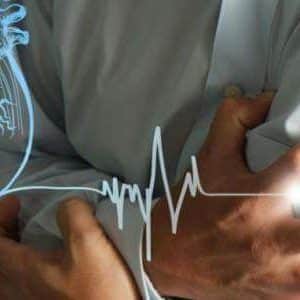
Everything you need to know about obsessive-compulsive disorder
She combined data from multiple studies to find the brain networks involved in OCD.
What is obsessive-compulsive disorder?
Obsessive-compulsive disorder has two main symptoms. The first is obsessive thoughts that usually revolve around fears of harm to the person with OCD or their loved one. The second symptom is compulsive behaviors, which are a way in which a person tries to regulate their anxiety.
Commonalities can be associated with obsessions - a person who fears catching a disease may continue to wash his hands. But vulnerabilities can also be irrelevant: a person with OCD may think that an event is more likely to occur if you fail to perform a certain action a certain number of times, for example. For diagnostic purposes, we usually say that the disease must interfere for at least an hour a day and cause significant impairment.
It has been hypothesized that the brain networks involved in error processing and the ability to stop inappropriate behaviors—inhibitory control—are important in OCD. This is often measured in experimental tests such as the stop sign task: participants are asked to press a button each time they see an image on the screen, unless they hear a sound after viewing the image. Previous studies that have used this type of task within a functional MRI scanner to look at abnormalities in brain activation have provided inconsistent results, possibly due to small sample sizes.
We collected data from 10 studies and put them together in a meta-analysis with a combined sample of 484 participants.
Which brain networks are involved?
Obsessive-compulsive disorder is a disorder of specific brain circuits. We think there are two main types. First: the “orbital-columbar-thalamus” circuit, which includes habits in particular — is physically expanded in OCD and over-activated when patients are shown images or videos related to their fears, so it acts like a throttle on compulsive behaviors.
The second is the "aminopolar network," which is involved in detecting when you need more self-control over your behavior. In our meta-analysis, we found that patients showed increased activation in this brain network, but that they performed worse during the same inhibitory control task. While patients with OCD show more activation in this brain network, it does not bring about the subsequent changes in behavior that we normally see in healthy people.
What did you discover about OCD treatments?
Psychotherapy is very important for OCD, particularly cognitive behavioral therapy. This involves getting patients gradually closer to the things they fear and learning that bad things don't happen when they are exposed to OCD stimuli. We're doing a large study on the topic now, and looking at brain scans before and after treatment, to examine whether brain networks show more normal activation patterns as patients improve.





